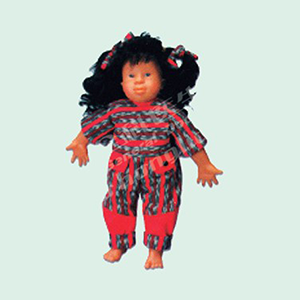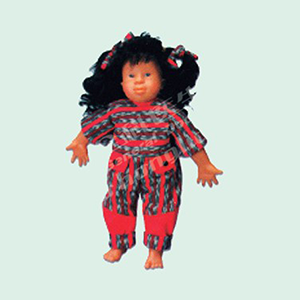ADA MED SUPPLY LIMITED
Phone:+86 19937901373
Tel:+86-0379-65160607
Email:adaanatomy@adaanatomy.com

Article tag: Down Syndrome Infant care model BIX-F135

Down Syndrome is a common genetic disorder characterized by intellectual impairment, motor retardation, and a range of physical health problems. For caregivers, the care of infants with Down syndrome presents unique challenges, including multi-system health monitoring, early intervention and special care needs. Therefore, how to accelerate the medical staff to master the relevant nursing skills is an important issue to improve the quality of nursing and ensure the health of infants. ** Baby Care Model for Down Syndrome ** As an advanced training tool, can it help medical students and caregivers master these professional skills more quickly?

Down Syndrome Infant care model
1. The application value of Down syndrome infant nursing model
The Down Syndrome Baby Care model simulates the physiological characteristics and common health problems of babies with Down syndrome, such as heart disease, indigestion, respiratory diseases, etc. This model can provide a realistic operating experience and help medical staff quickly apply what they have learned to practice on the basis of theoretical learning. Through repeated practice, students can get familiar with the nursing process, operation skills, and cope with various emergencies.
Case in point: In one study, caregivers trained with a Down syndrome infant care model were able to identify abnormal signs in infants, such as hypoglycemia, apnea, etc., more quickly during clinical care, reducing care errors by 20%.
2. Systematic training accelerates skill acquisition
The care of an infant with Down syndrome involves knowledge and skills in many areas, including feeding, respiratory support, thermoregulation, intellectual and language development support, etc. Through the model, students can be systematically trained to become proficient in these skills. For example, the care model helps caregivers learn how to implement effective feeding techniques and early interventions by simulating common symptoms such as feeding difficulties, swallowing problems, and gastroesophageal reflux in infants.
- Research data: According to a survey of medical students, those trained in the model of care for babies with Down syndrome were 30 percent more efficient at handling feeding problems in clinical applications, and were able to recognize changes in the infant's condition more quickly, reducing delays in care.
3. Provide real-time feedback and opportunity for repetition
The nursing model is equipped with an intelligent feedback system that monitors in real time whether the caregiver is doing it correctly and provides specific suggestions for improvement. This feedback mechanism helps students find problems and make adjustments in time, avoiding the long-term cultivation of incorrect nursing skills. Through repeated practice and error correction, trainees can master the correct nursing methods faster and improve their professionalism.
Case in point: An experiment with nursing students showed that the use of a feedback-based infant care model for Down syndrome resulted in a 35% improvement in accuracy and a significant reduction in error rates when performing specific care tasks such as respiratory tract management, limb movement support, etc.
4. Strengthen emergency response capacity and multitasking
The nursing process of Down syndrome infants is often accompanied by sudden health problems, such as asphyxia, apnea, etc., which requires nurses to have the ability of quick judgment and emergency response. By simulating these emergencies, the nursing model helps students improve their ability to respond to emergencies. For example, students can simulate emergencies such as apnea or vomiting in a Down's baby on the model, thereby improving the ability to quickly handle and multitask.
- Data support: According to a clinical trial, nurses trained with a Down syndrome infant care model experienced a 40% increase in reaction time and a significant increase in fluency and accuracy during simulated first aid.
5. Improve the level of comprehensive care
Care for an infant with Down syndrome is not only purely physical support, but also includes psychological, social and educational support. The model can simulate the growth process of Down's babies and help participants understand the special needs of infants, including psychological stimulation, language development support and emotional care. Through this comprehensive nursing training, medical staff can provide more comprehensive care services in clinical work.
A study of nursing schools showed that trainees trained using the Down Syndrome infant care model experienced significant improvements in their psychological care and social support skills, were better able to communicate with parents, and helped families adjust to their child's special needs.
Conclusion: To accelerate the mastery of professional nursing skills
The Down Syndrome Infant Care model provides a systematic and efficient learning platform for medical students and caregivers. Through realistic simulation training, participants are able to quickly master a variety of nursing techniques, including feeding, breathing support, health monitoring and psychological intervention, without clinical stress. A large number of studies have shown that training with these models can significantly improve the operational accuracy, emergency response ability, and comprehensive care of students, thus accelerating the transition from theoretical learning to clinical practice. Therefore, the Down syndrome infant nursing model is undoubtedly an extremely important teaching tool in medical education, helping medical staff to master professional nursing skills in a short time and provide better care services.